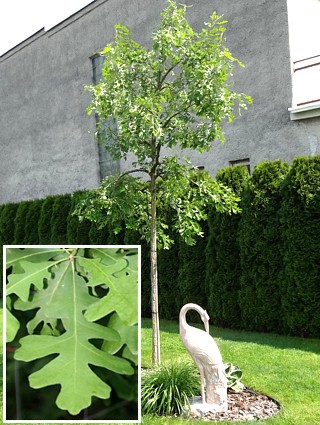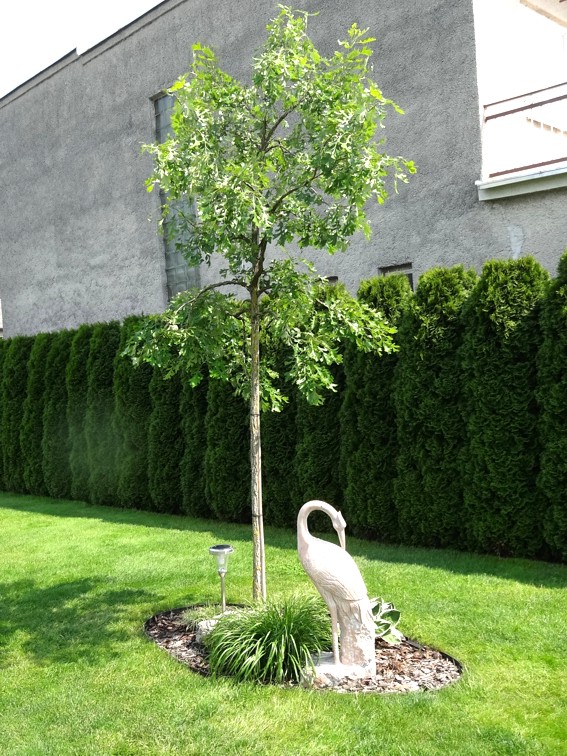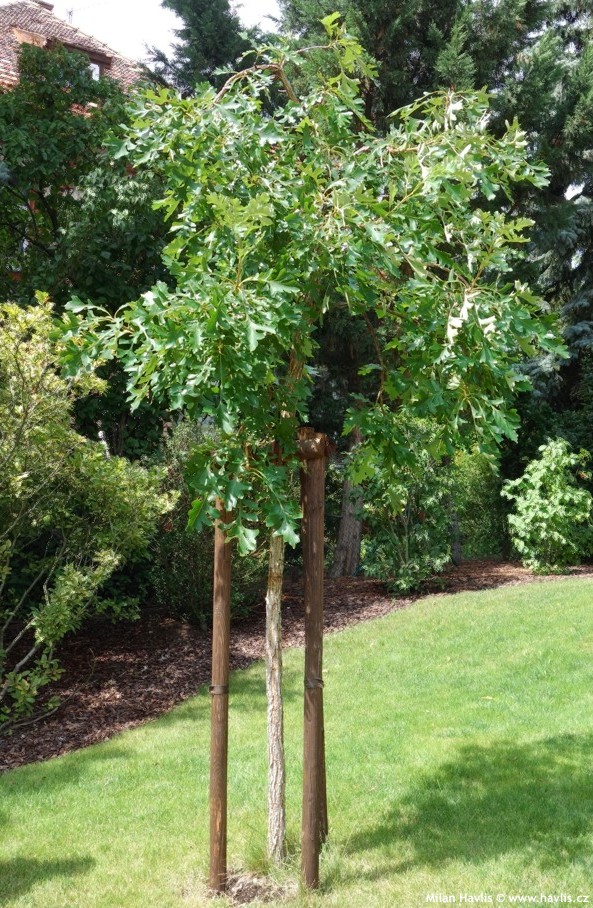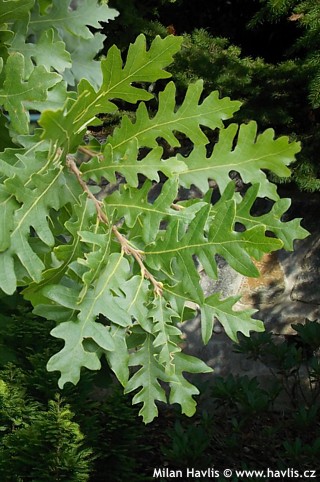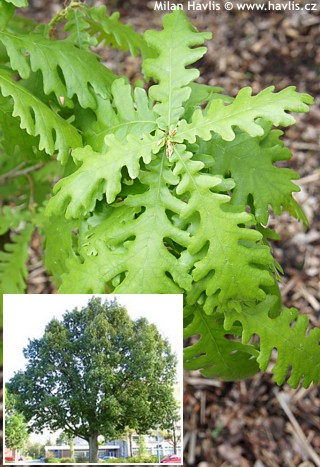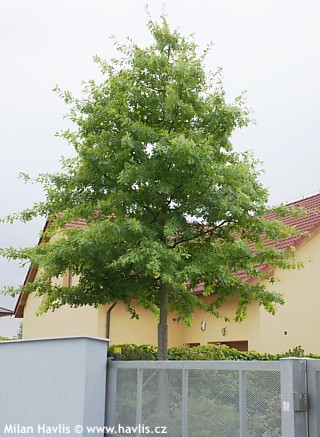Quercus macrocarpa bur oak
Quercus
Oaks are common trees of our natural woodlands. They border our ponds, occur naturally in our mixed forests, and make magnificent specimen trees in our parks and arboretums where less common species or rare varieties can be seen. Bur oak is native to Canada and N.E. USA, and is a unique species with beautiful foliage and bark.
Bur oak is renowned mainly for its furrowed bark of the trunk and ridged twigs with winged look and corky feeling when touched. Both bark and twigs are pale brown to grey. Deciduous leaves are rather large, up to 25 cm long, light to mid green, firm to almost leathery, deeply lobed towards the petiole, and shallowly lyre-like lobed and wider at the apex. If grown in acid soil the leaves turn dark red and deep orange for a short period of time in autumn.
It grows possibly at the slowest growth rate among all oak trees, though it is considered a large tree (over 20 m tall) in maturity given plenty of space e.g. in the wild, arboretum or park. There it forms a spreading, dome-like canopy providing excellent shade when 50 or more years old. In gardens it keeps much smaller with more or less pyramidal crown, and can be easily pruned in late winter.
Bur oak naturally grows on dry and calcium-based soils but will adapt to a wide range of soils including acid and moist, and will even cope with standing water if grown there from very young age or seed. The roots are not dangerous for roads and pavements if placed in reasonable distance (it makes a substantial trunk girth), which makes it suitable for city planting. Newly planted trees need to be staked for 2-3 years to establish. It is exceptionally hardy to about -40°C (USDA zone 3).
Last update 16-02-2017

































